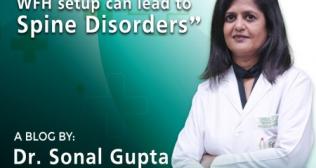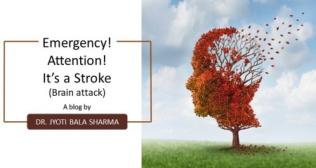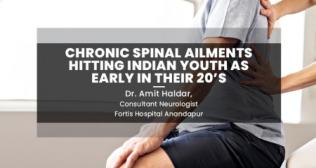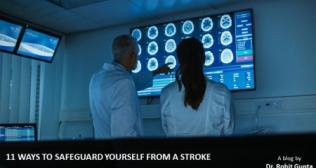
Neurology
Epilepsy: Breaking The Myths
Dr. Alok Jain Mar 16, 2020

Epilepsy is a chronic neurological condition, the hallmark of which is recurrent unprovoked seizures. Approximately 5-10 out of 1000 people suffer from epilepsy globally. A person is diagnosed with epilepsy if they have at least two seizures that were not caused by some known and reversible medical condition like alcohol withdrawl or very low blood sugar. The seizures in epilepsy may be related to a brain injury or a family tendency, but often the cause is completely unknown.
Epilepsy can affect anybody and can occur at any age. Having epilepsy can also affect one’s safety, work, driving, relationships and so much more. The social stigma related to epilepsy or how people react to a person with epilepsy is often a bigger problem than the disease itself. Also there are a lot of common myths attached to epilepsy regarding which awareness needs to be spread in our society.
Myth No 1: Epilepsy is mentally disabling and prevents the person from having a worthwhile career and lead a meaningful life.
Fact: People With Epilepsy (PWE) can join most professions, except for some like, armed forces, pilot, driver of public transport vehicle etc. Famous artists, scientists, philosophers and world leaders have suffered from epilepsy. The list includes names like Socrates, Tolstoy, Napolean, Alexander, Beethoven, Newton and Agatha Christie
Myth No 2: PWE should not marry or have kids
Fact: PWE can have a normal married and sexual life and can plan a pregnancy under medical supervision.
Myth No 3: PWE should not take part in sports.
Fact: PWE can take part in most sports in school under supervision. Swimming and water sports, mountaineering, aerosports are usually avoided.
Myth No 4: PWE should not watch TV or work on computer.
Fact: Not more than 6 % of the cases have seizures triggered by flashing lights. Playing computer games is safer than playing video games.
Myth No 5: During a seizure, putting some object in the patient’s mouth, making him smell his shoes, or restricting the limb movements will help.
Fact: One needs to ensure that the patient does not injure himself during the event, and does not aspirate; and just let the seizure run its course.
Myth No 6: Epilepsy can spread from one person to another.
Fact: Epilepsy is not an infectious disease. A certain cases are due to head injury, stroke, brain infections or tumour. In most cases, no cause can be found.
Myth No 7: The children of an epilepsy patient will also have epilepsy.
Fact: Epilepsy is an inherited condition in only a small percentage of cases, though the children or siblings can have a lower seizure threshold.
Myth No 8: A normal brain imaging and EEG study rules out epilepsy.
Fact: The diagnosis is usually based on an detailed and carefully taken medical history of the event. A properly done EEG with the various activation procedures can be of great help in making a diagnosis of epilepsy and further classifying it but does not exclude the diagnosis. Consulting a neurologist is hence of utmost importance.
Myth No 9: The duration of treatment is 2 or 3 years.
Fact: The duration of treatment may vary from no treatment at all to lifelong treatment and is decided or predicted on a case to case basis by a doctor trained in managing epilepsy.
Myth No 10: Drugs for epilepsy are very toxic and have numerous side effects.
Fact: Antiepileptic drugs side effects can be minimised by choosing the appropriate drugs in the right dosage or combination with regular monitoring. In some cases epilepsy surgery is an option if the drugs are ineffective.
Categories
Clear allMeet the doctor

Dr. Alok Jain
ADDITIONAL DIRECTOR NEUROLOGY | Fortis Ludhiana
- Neurology | Neurology
-
10 Years
-
800



















